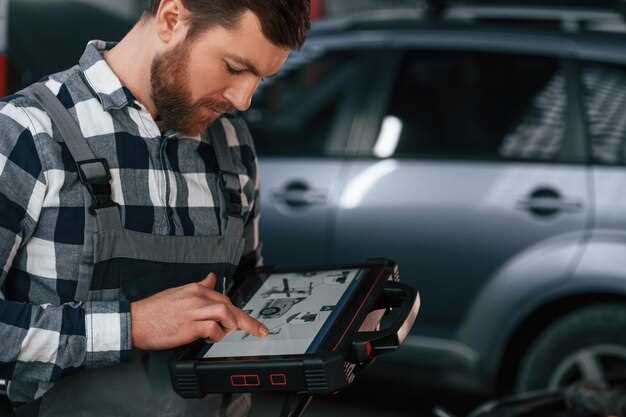Common Jeep repair issues and how to solve them


Owning a Jeep is an exhilarating experience, but it can also come with its set of challenges. From off-road adventures to daily commuting, these vehicles are built to endure various terrains and conditions. However, even the most rugged Jeep models can face common repair issues that every owner should be aware of. Understanding these problems and their fixes can save you time, money, and ensure your Jeep remains reliable.
In this guide, we will explore some of the most frequent repair issues that Jeep owners encounter. Whether it’s electrical problems, engine troubles, or suspension concerns, we aim to provide clear insights into each issue. We will also highlight effective fixes that can help you resolve these problems efficiently and enhance your vehicle’s performance.
From simple DIY solutions to professional repairs, knowing the root causes of common Jeep problems can empower you to take action. By being proactive, you can maintain your Jeep in top condition, ensuring it continues to handle the rugged paths and adventures you love. Let’s dive into the specifics of these common issues and their corresponding fixes.
Identifying and Fixing Engine Performance Problems
Engine performance issues in Jeep vehicles can manifest in various ways, such as reduced power, poor fuel efficiency, or rough idling. To effectively address these problems, a systematic approach to troubleshooting is essential. Begin by gathering information about the symptoms experienced. Pay attention to unusual noises, vibrations, or warning lights on the dashboard, as these can provide valuable clues.
One common step in troubleshooting is checking the air and fuel systems. A clogged air filter can restrict airflow, leading to decreased engine performance. Inspect the filter and replace it if it is dirty. Similarly, fuel system problems can arise from a clogged fuel filter or malfunctioning fuel pump. Ensure both components are in good condition for optimal performance.
Next, examine the ignition system. Faulty spark plugs or ignition coils can result in misfires, affecting engine power and efficiency. Inspect the spark plugs for wear or damage and replace them if necessary. Also, check the ignition timing, as incorrect timing can lead to performance issues.
An essential part of troubleshooting is utilizing a diagnostic scan tool. Connecting a scan tool to the onboard diagnostics (OBD-II) port can reveal error codes that point to specific issues. Addressing these codes can often lead to swift resolutions of performance problems.
Another critical area to investigate is the exhaust system. A blocked catalytic converter or exhaust leak can hinder engine performance. Listen for unusual sounds and check for visible damage or blockage in the exhaust system components. Repair or replace any faulty parts to improve performance.
Finally, maintain regular engine maintenance. Routine oil changes, engine tuning, and fluid checks can prevent many performance issues from occurring. Keeping the engine well-maintained ensures it operates efficiently, ultimately extending the vehicle’s lifespan.
Resolving Transmission Issues in Jeep Models

Transmission problems can be a frequent concern among Jeep owners, impacting performance and reliability. Identifying and resolving these issues early is critical to maintaining your vehicle’s functionality. Below are common transmission problems and troubleshooting steps to help you address them effectively.
One of the most notable symptoms of transmission issues is slipping, where the vehicle unexpectedly changes gears. This can be caused by low transmission fluid levels or worn-out components. To troubleshoot, check the fluid levels and quality. If the fluid appears dark or burnt, it may need to be replaced. Additionally, inspecting the transmission filter for clogs can help improve performance.
Another common issue is difficulty in engaging gears. This problem might arise from a failing clutch in manual transmissions or issues with the shift linkage in automatics. To troubleshoot, examine the shift linkage for any signs of wear or misalignment. For manual transmissions, ensure the clutch pedal’s free play is within specifications. If adjustment does not resolve the issue, a clutch replacement might be necessary.
In some instances, unusual noises during gear changes can indicate transmission troubles. Grinding or whining noises may suggest internal damage or insufficient lubrication. To troubleshoot these sounds, listen carefully to when they occur and check whether they coincide with specific driving conditions. Assess the fluid condition and consider professional inspection if noises persist.
Overheating is another potential problem, especially during heavy towing or off-road driving. An overheating transmission can lead to severe damage if not addressed promptly. To troubleshoot this issue, make sure the cooling system is functioning properly and that the transmission cooler is clean. Installing an auxiliary cooler may be advisable for those who frequently operate in demanding conditions.
Finally, warning lights on the dashboard can indicate transmission faults. If the check engine light illuminates, using a diagnostic scanner can help retrieve trouble codes. This information can guide you in identifying specific transmission-related problems. Follow the codes to their respective solutions, and consult a service manual if necessary.
In conclusion, resolving transmission issues in Jeep models involves careful troubleshooting. Regular maintenance, such as fluid checks and timely repairs, can significantly extend the life of your transmission. If problems persist despite your best efforts, consider seeking professional assistance to ensure your Jeep maintains optimal performance.
Addressing Electrical System Failures in Jeep Vehicles

Electrical system failures in Jeep vehicles can lead to various issues, affecting everything from starting the engine to operating essential accessories. Troubleshooting these problems requires a systematic approach to identify and resolve the underlying causes effectively.
Start by checking the battery, as it is often the primary source of electrical issues. Ensure that the battery terminals are clean and tightly connected. If the battery is old or not holding a charge, consider replacing it. Use a multimeter to measure voltage; a healthy battery should read around 12.6 volts when fully charged.
If the battery checks out, inspect the fuses and relays. A blown fuse could disrupt power to specific components, while a faulty relay might prevent electrical signals from reaching necessary systems. Refer to the owner’s manual for the location of fuses and relays, and replace any that are damaged.
The wiring harness is another critical area to examine. Look for frayed or corroded wires that might cause short circuits or loss of connectivity. Pay special attention to common problem areas, such as connections near the battery, under the dashboard, and around the headlights.
Next, assess the starter motor and ignition system. If the engine doesn’t crank, it might indicate starter failure, which can be diagnosed by testing the starter relay and connections. Also, inspect the ignition switch; a malfunctioning ignition switch may prevent the vehicle from starting or cause intermittent electrical issues.
For more advanced troubleshooting, utilize an OBD-II scanner to check for any diagnostic trouble codes (DTCs). These codes provide valuable information regarding electronic control modules and can help pinpoint issues in the electrical system. Addressing any flagged problems based on these codes can lead to quick resolutions.
Finally, if basic troubleshooting does not resolve the issue, it may be beneficial to consult a professional mechanic with specific expertise in Jeep electrical systems. Electrical problems can be complex, and experienced technicians can offer more specialized diagnostics and solutions.
